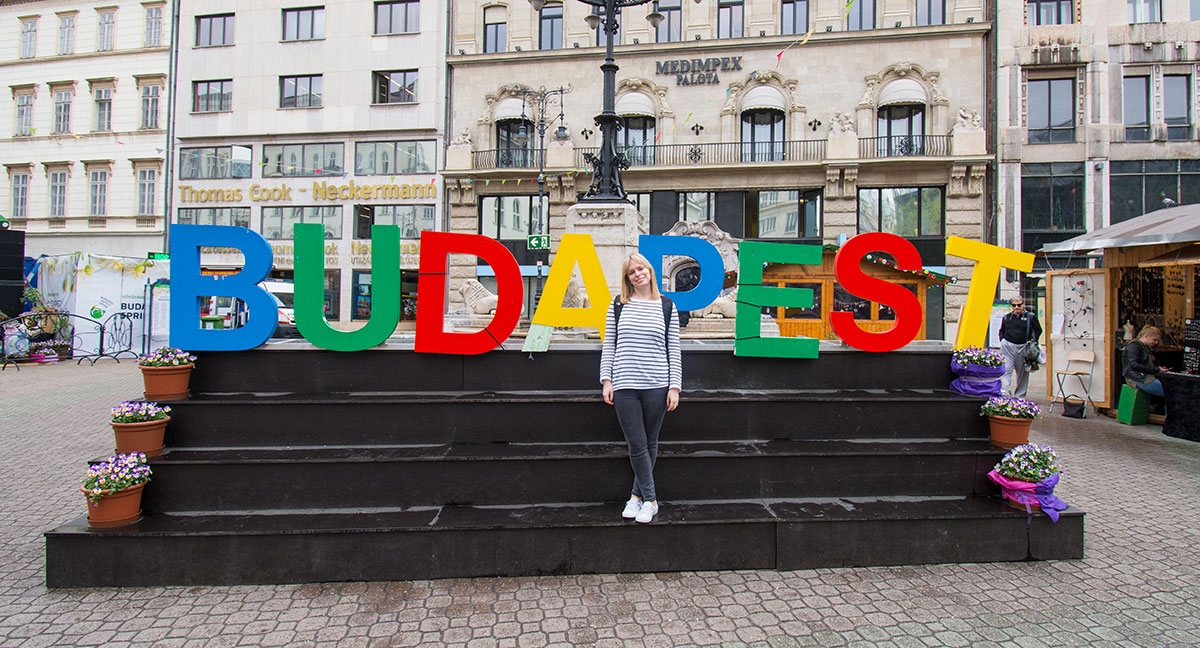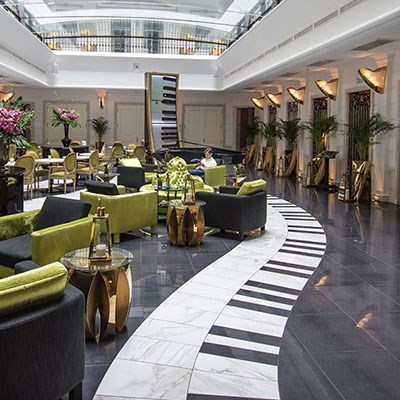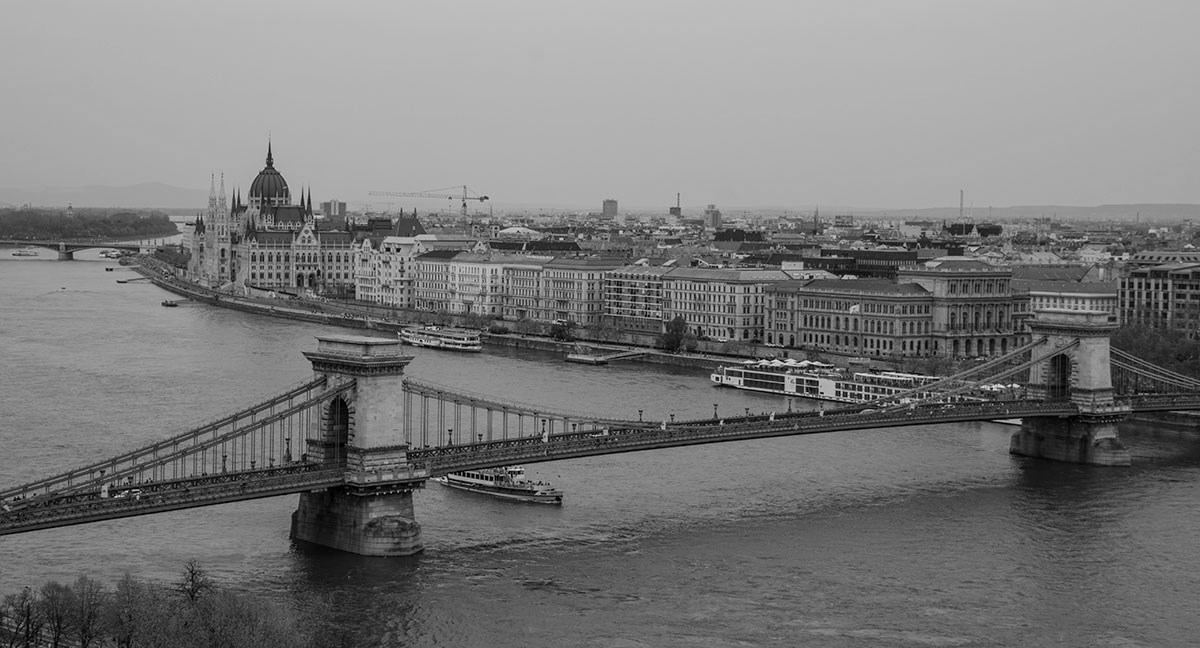
Itinerary | Europe | Hungary
A Long Weekend in Budapest

Straddling the mighty Danube River, Hungary’s capital is essentially two cities rolled into one – Buda and Pest. An architectural delight, Budapest has enough baroque, neoclassical, Eclectic and art nouveau buildings to satisfy everyone, although most of what you will encounter today was built during the city’s golden age in the 19th century.
It’s true that a weekend isn’t really enough time to do Budapest justice, you could easily spend a week or more exploring everything this magnificent city has to offer! However, we will guide you through what is achievable in a short, two to three day trip. On your long weekend in Budapest you will be very busy taking in all the sights. There is so much to experience, mouth-watering Hungarian cuisine, architectural marvels, live music, museums, thermal baths and street markets.
Where to stay
The most popular area to stay in Budapest is close to the River on the Pest side. The Belváros (Inner City), Lipótváros (District V), Terézváros (District VI), Erzsébetváros (District VII) and Palace District neighbourhoods all have some excellent accommodation options ranging from five star luxury to more affordable three and four star hotels and hostels. We stayed at the fabulous Aria Hotel in the heart of Lipótváros. Although this is one of the pricier options in the city this musically themed boutique hotel remains superb value for money; boasting a beautiful music garden area on the ground floor, individually designed rooms based on a variety of musicians, a stunning roof top bar area and a luxurious spa in the basement.
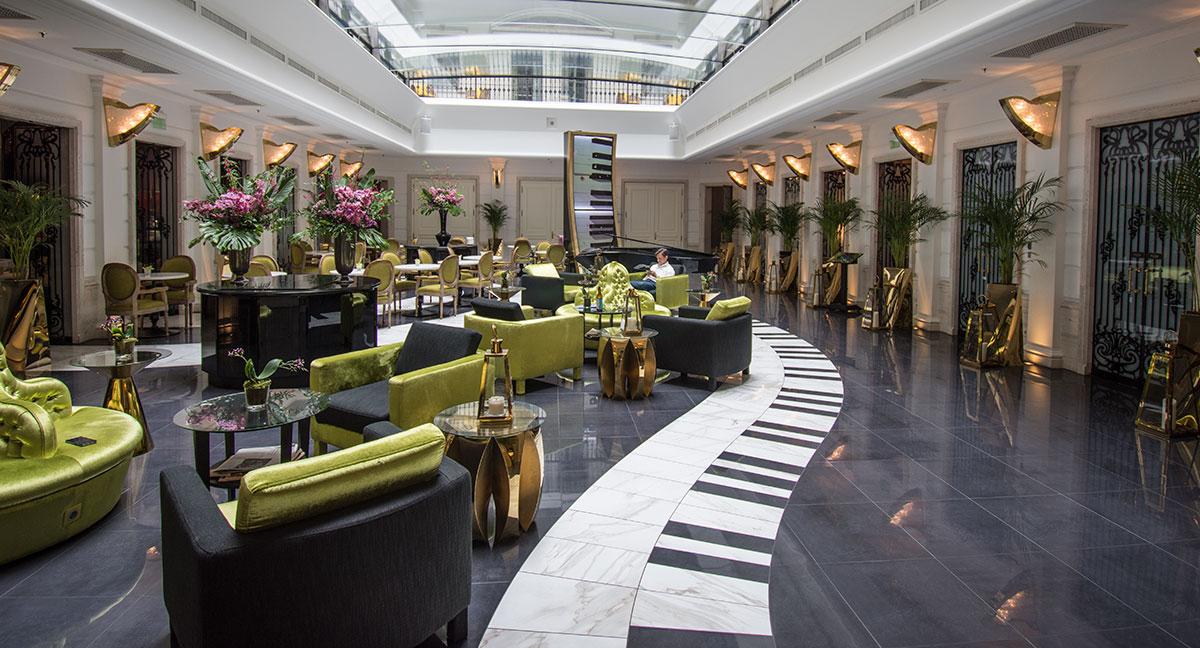
Architecture
The top attractions in Budapest are without doubt the architectural masterpieces the city has to offer. On your first day we recommend a trip over to Buda Hill (on the Buda side of the river) where you can take in the Buda Castle, Fisherman’s Bastion and some superb views of the city. Take a short walk from your hotel on the Pest side of over to Buda hill via the Széchenyi Chain Bridge.
The Széchenyi Chain Bridge is a significant landmark in the city and at the time of its construction in the 1840’s it was regarded as one of the modern worlds engineering wonders. It was designed by the English engineer William Tierney Clark and built by the Scottish engineer Adam Clark, it was the first permanent bridge across the Danube in Hungary. The “Chain Bridge” has become a symbol of national awakening and has asserted an immense significance in the country's economic, social and cultural life, in a similar way to the Brooklyn Bridge in New York City.
After crossing the bridge you can either take a short ride on the funicular (around 7 EUR) or a pleasant 10-15 minute walk up to the Vár (or Castle Hill). The Vár is the Buda side of the city’s most prominent feature, the 1.5km long plateau is covered with bastions, mansions and a massive Baroque palace.
The Palace that stands on the site of the Buda Castle today was built between 1749 and 1769 although the historical castle and palace complex (often referred to as the royal palace) of the Hungarian kings in Budapest was first completed in 1265. The Royal Palace also houses the Hungarian National Gallery and Budapest History Museum.
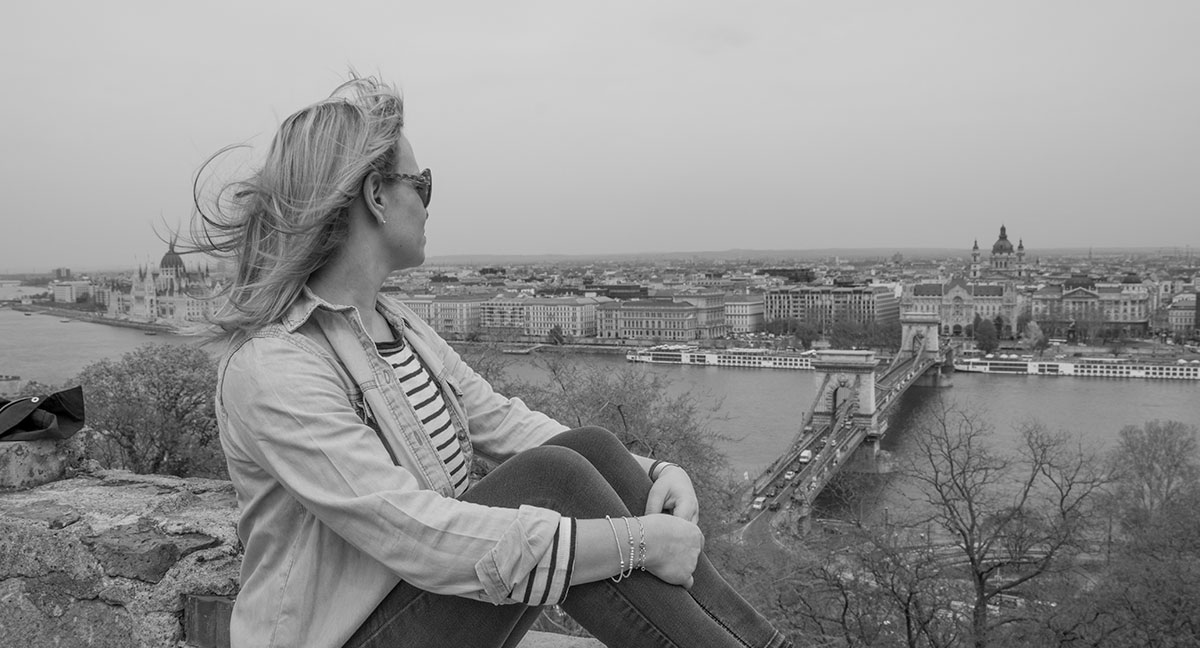
Further along the Vár you will reach the neo-Gothic style Matyas Church and Fisherman’s Bastion, these romantic nineteenth-century evocations of medieval glories are quite a contrast to the somewhat plain exterior of the Royal Palace. The Matyas Church with its wildly asymmetrical diamond patterned roofs and toothy spires serves as a superb venue for concerts during the Budapest festival season. Offering superb views across to the Pest side of the river, the undulating white fortification of cloisters and stairways traversing at ten-like turrets that make up Fisherman’s Bastion is a truly impressive sight. Although fishermen reputedly defended this part of the hill in the middle ages, the bastion is purely decorative.
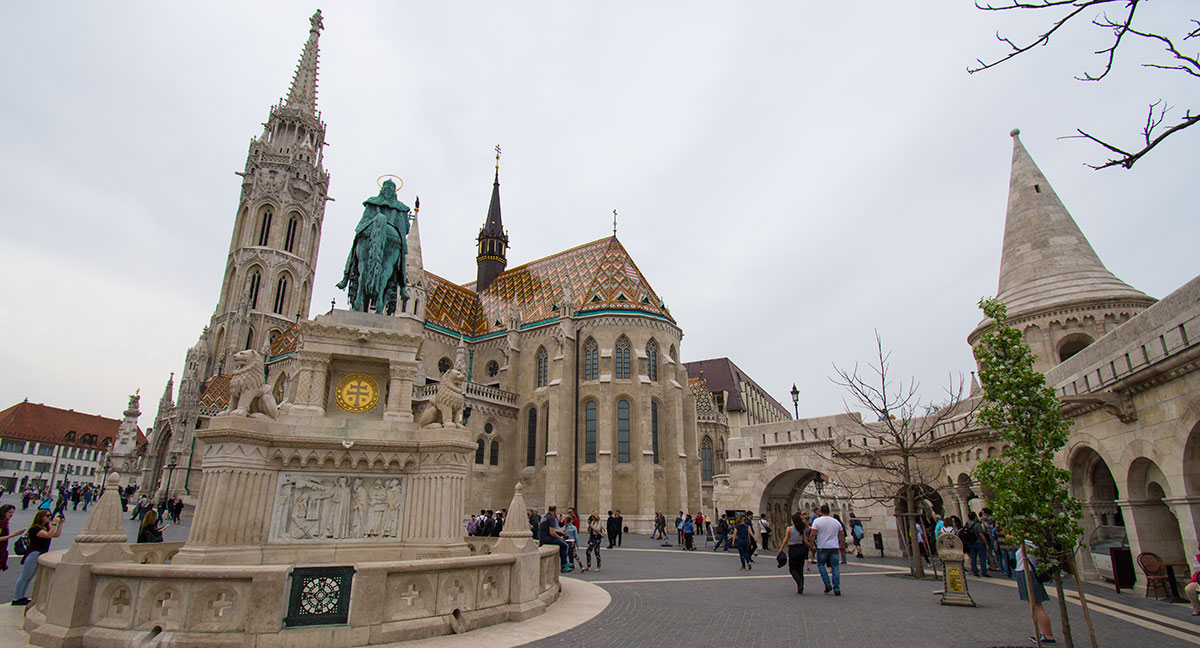
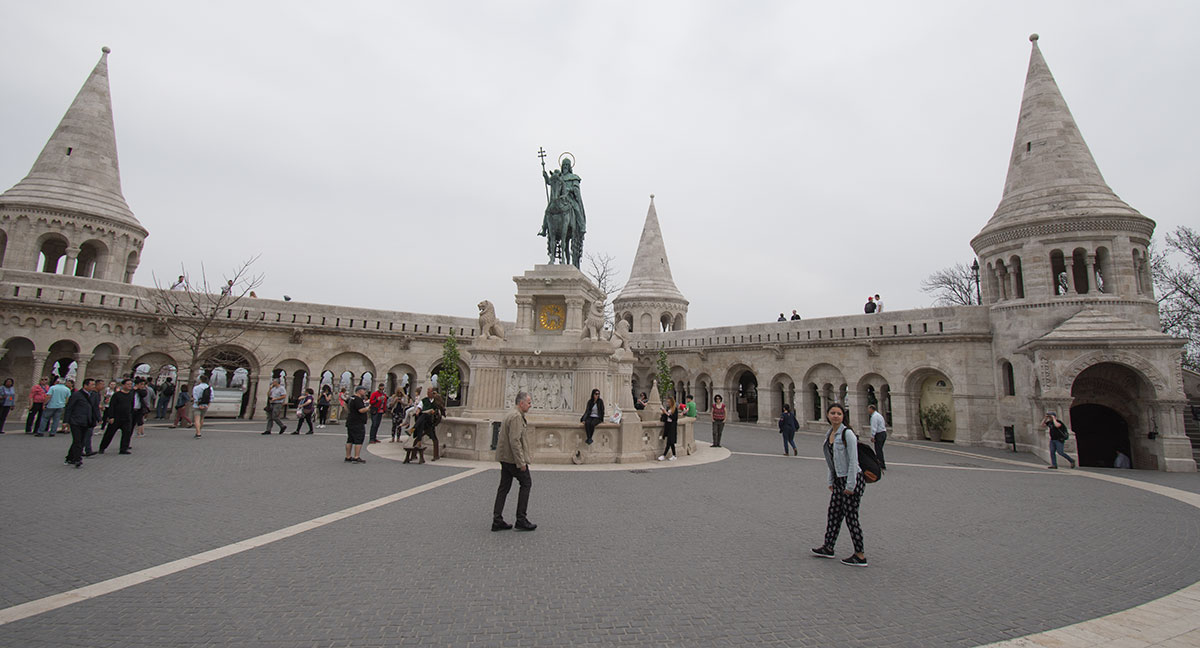
The next stop on your architectural tour of Budapest will be the Hungarian Parliament building back across the river on the Pest side. Built in the 19th century, the Hungarian Parliament Building is one of Budapest’s most iconic buildings, and also it’s largest and tallest! If you can time you day well then take a stroll down the banks of the River Danube at around sunset and watch the building become transformed with a warm, orange glow. The Parliament Building is in the Gothic Revival style and it has a symmetrical façade and a central dome. From inside the parliament is also symmetrical and thus has two absolutely identical parliament halls out of which one is used for the politics, the other one is used for guided tours.
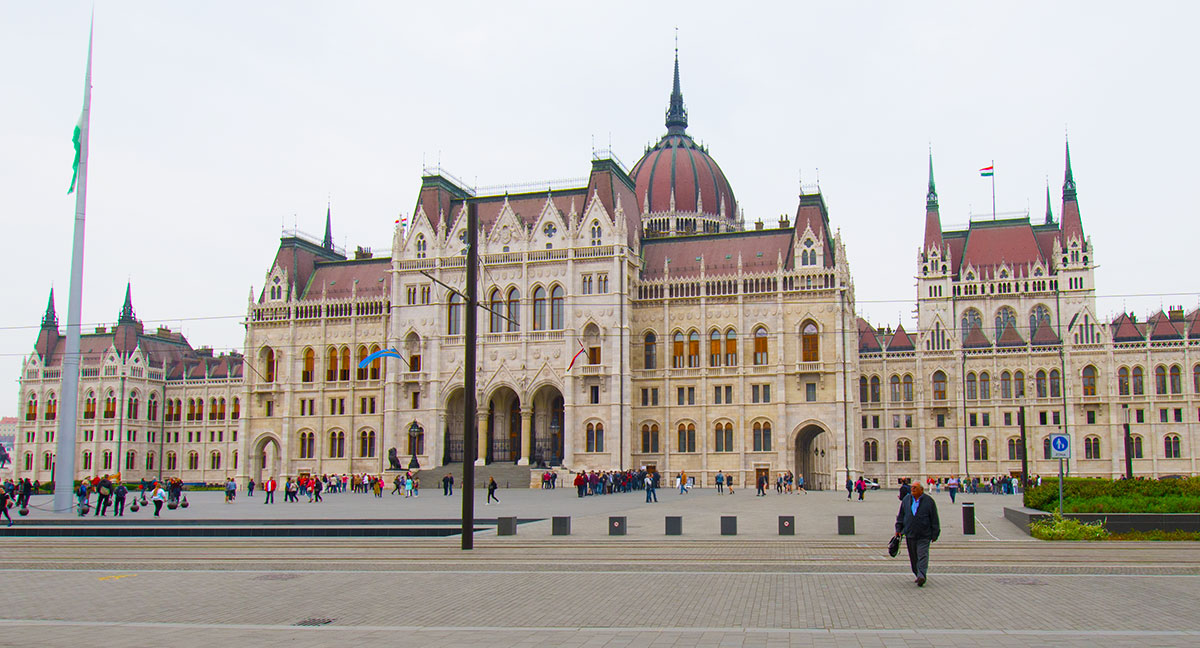
The Dohány Street Synagogue located in Erzsébetváros (Budapest District VII) is the largest Synagogue in Europer (2nd largest in the world) as is definitely worth a visit. The Viennese architect Ludwig Förster designed the Synagogue believing that no distinctively Jewish architecture could be identified, he therefore chose a theme based on architectural forms that have been used by oriental ethnic groups that are related to the Israelite people, these included Islamic models from North Africa and medieval Spain (the Alhambra). The building is a Moorish Revival style and was constructed between 1854 and 1859. The leafy area of Dohány Street in the city center, carries strong Holocaust implications as it formed the border of the Budapest Ghetto during World War 2.
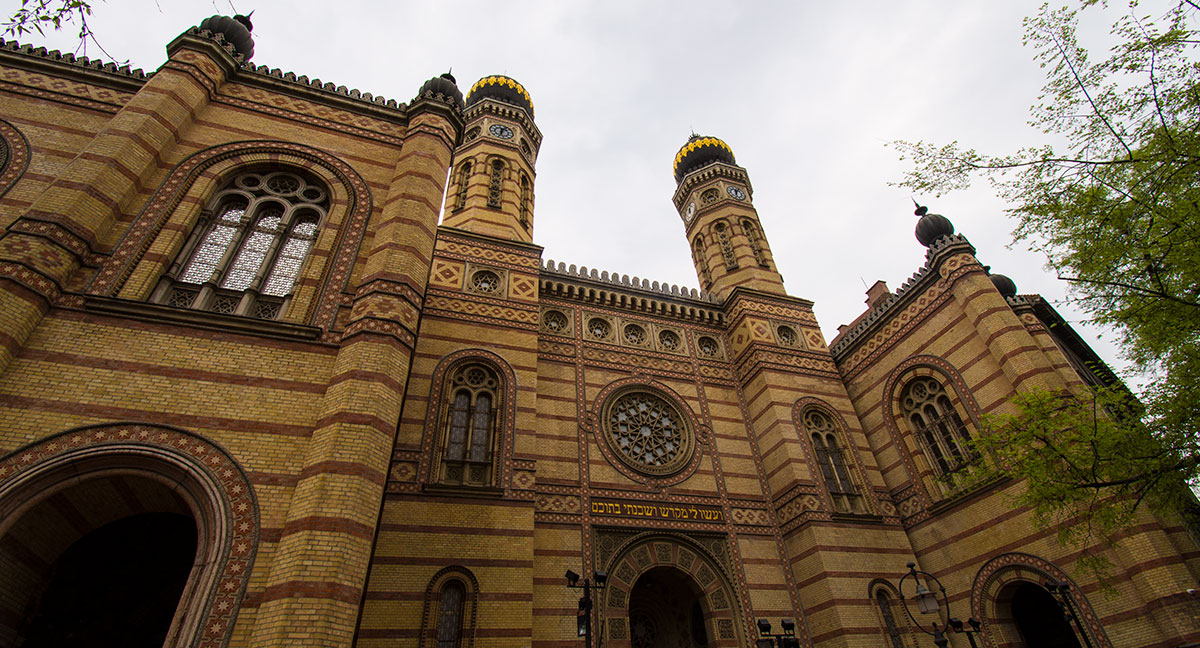
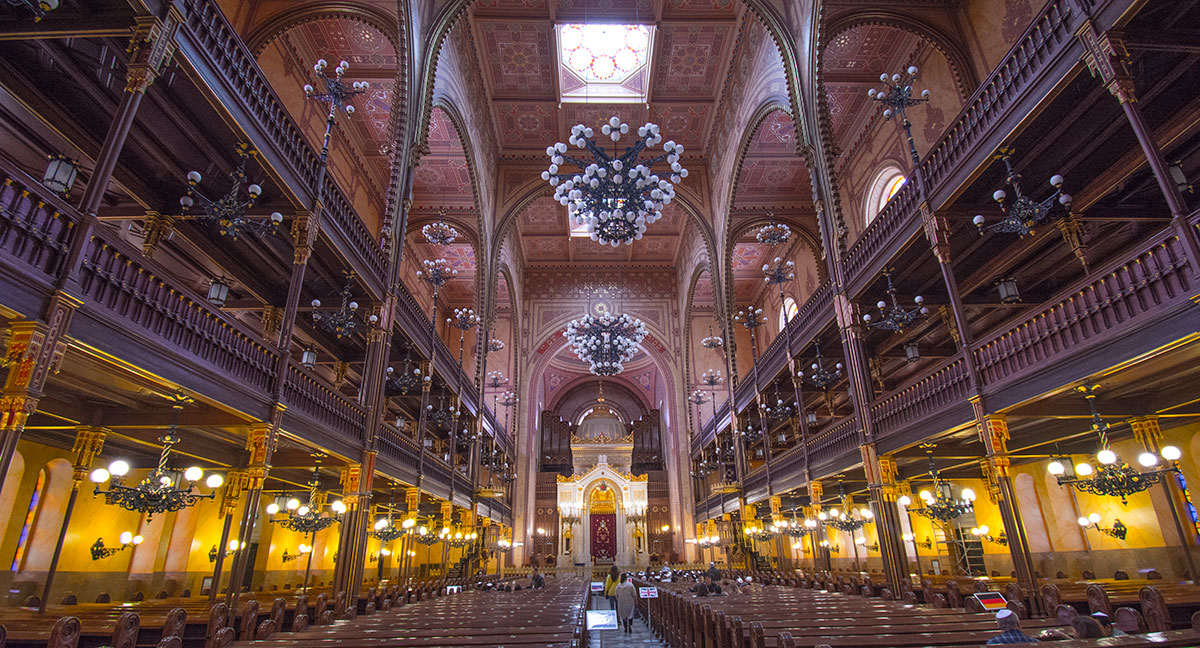
St. Stephen’s Basilica - Budapest’s neoclassical Cathedral, is the largest church in Budapest. Although in architectural terms it is a cathedral, it was given the title of ‘basilica minor’ by Pope Pius XI in 1931. It took more than 50 years to build the Basilica and it was finally completed in 1905. Much of the interruption during construction had to do with a debacle in 1868 when the dome collapsed during a storm, the structure had to be demolished and then rebuilt from the ground up. The inauguration ceremony took place in 1906 and was attended by Emperor Franz Joseph.
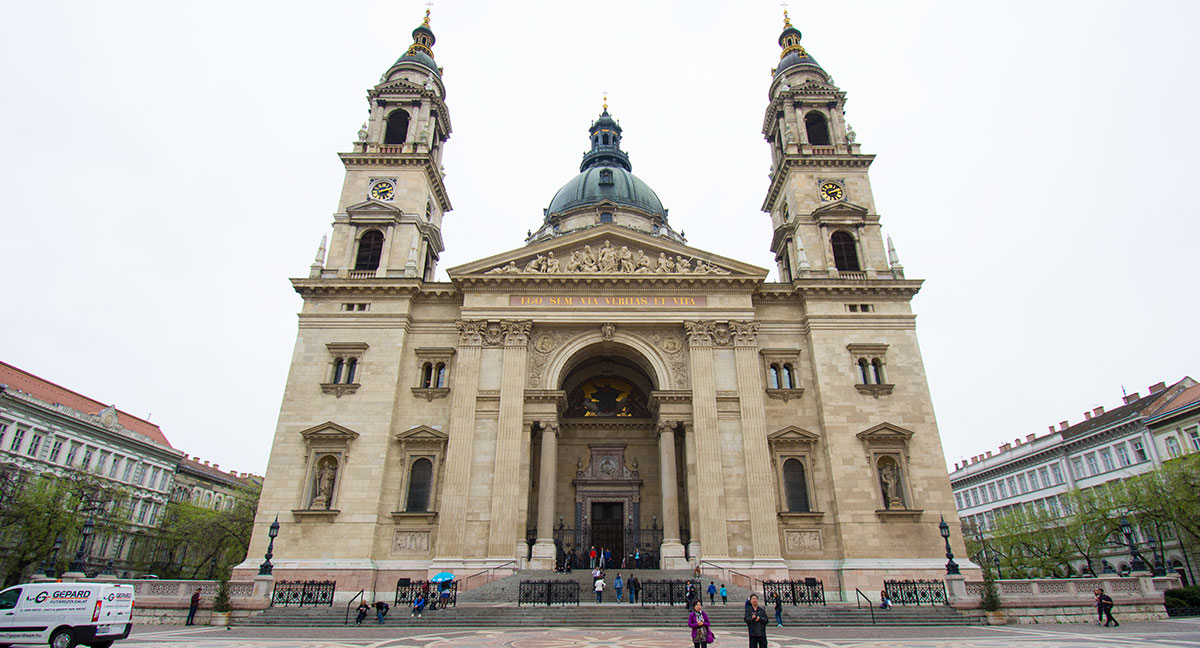
The basilica is rather dark and gloomy inside, but take a trip to the top of the dome for incredible views.
Ruin Bars
After a busy day pounding the pavements you will be glad of some time to relax, with a drink or two! The Budapest “Ruin Bar” scene started in around 2001, with a bunch of young men looking for cheap places to drink. From their thirst and shallow pockets have grown some of the most lively and stylish places to drink in Budapest. Derelict buildings and unused outdoor spaces have been transformed into friendly, pleasantly chaotic bars where you can still get a pint of Hungarian Lager or a cocktail for around £2.50. The focal point of Budapest’s ruin bar scene is around District 7. You can find organised ruin bar pub-crawls online, these usually depart from one of the hostels in district 7 and for around 15 Euros you can sample a few drinks in each bar and gain entry to the nightclub “Instant” which is open until the early hours.
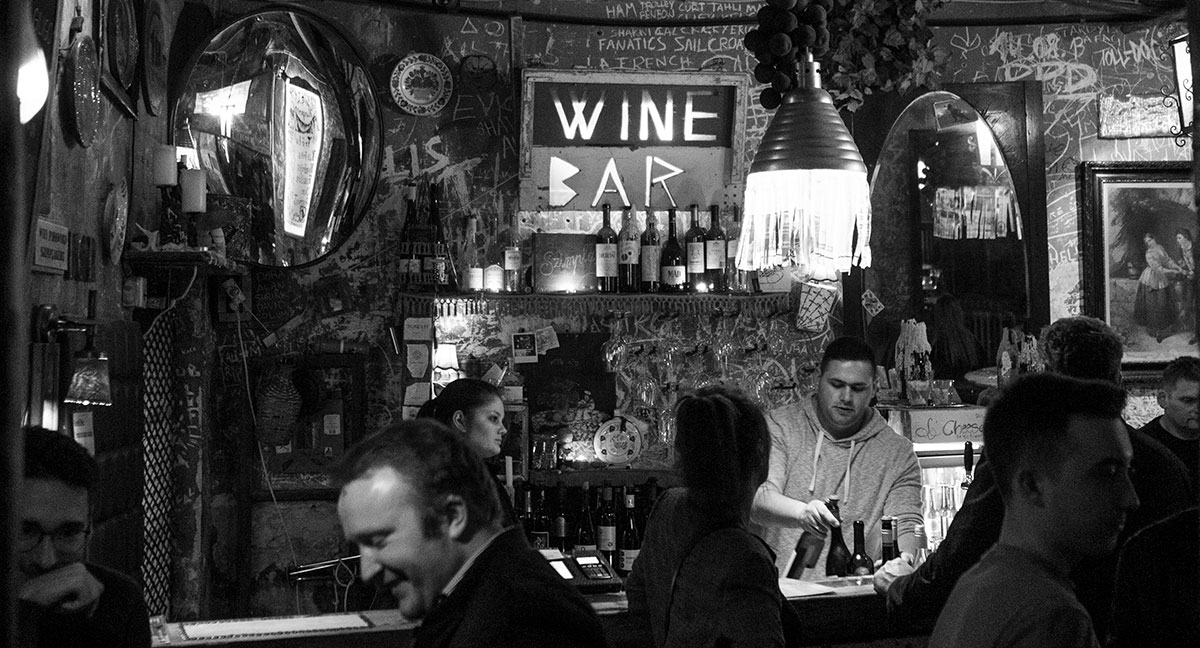
Szimpla Kert was the original ruin bar and has the classic signs: intentionally mismatched furniture that has seen better days, art that some visitors have an annoying habit of taking home without asking and, important in summer, a garden in which to catch the sun.
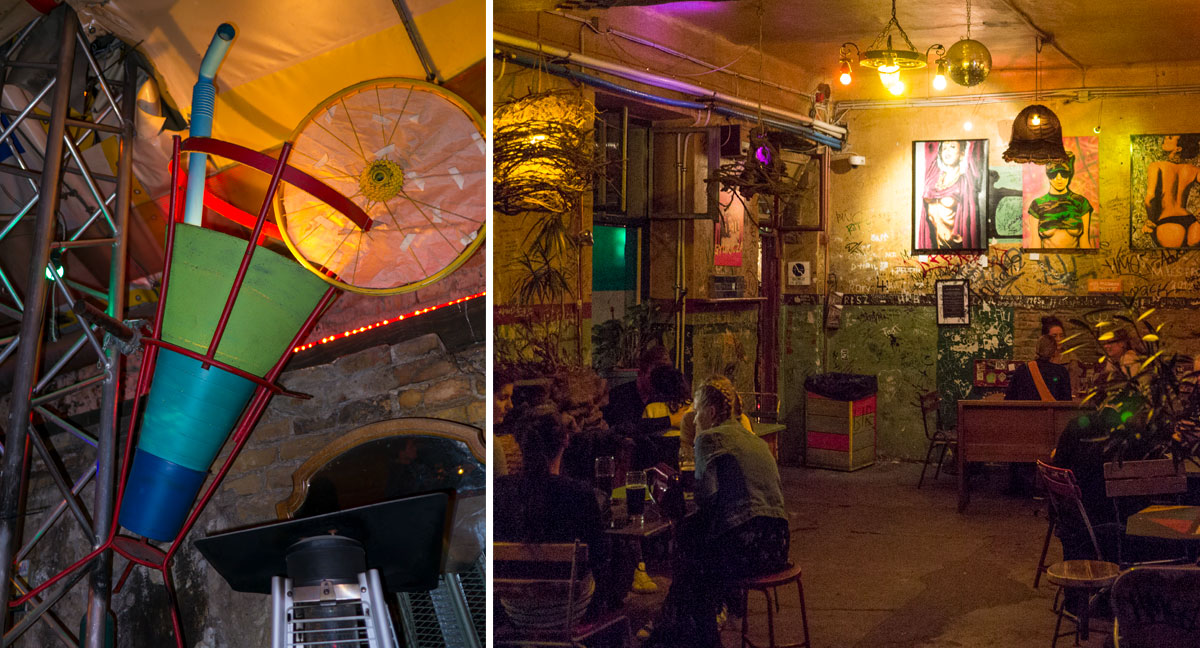
Unlike other ruin pubs, Szimpla Kert also has an old Trabant car in the garden that doubles as a table and chairs. Come here to explore the labyrinth of quirky themed rooms and taste the city’s modern history.
The ruin bar for the summer and the foodies, open-air Rácskert, situated in a former building yard, is more cosmopolitan beer garden than overheated bar, with a number of street-food outlets serving gourmet titbits from among Rácskert’s art installations and tidy trays of potted herbs.
Thermal Baths
No visit to Budapest is complete without a visit to one of the city’s thermal bathhouses. The city sits on a patchwork of over 100 thermal springs, and ‘taking the waters’ is considered an important part of everyday life here. Which bath you choose is a matter of taste and what exactly you’re looking for – be it fun, a hangover cure or relief for something more serious. The two largest and most visited bathhouses in Budapest are:
Széchenyi Baths in the City Park – a gigantic and lavish complex of 15 thermal baths and three swimming pools; the water temperature is up to 38°C. Széchenyi also introduces the relatively new concept of a “Beer Spa”, tubs for two are filled with freshly poured 36 degree warm thermal water combined with a jug of natural beer ingredients: the malt, hops and yeast have an amazing impact on your skin and body. But don’t worry – the water has a nice herbal scent! Meanwhile you can pull yourself as many pints of beer as you wish from the taps situated on the side of the tubs!
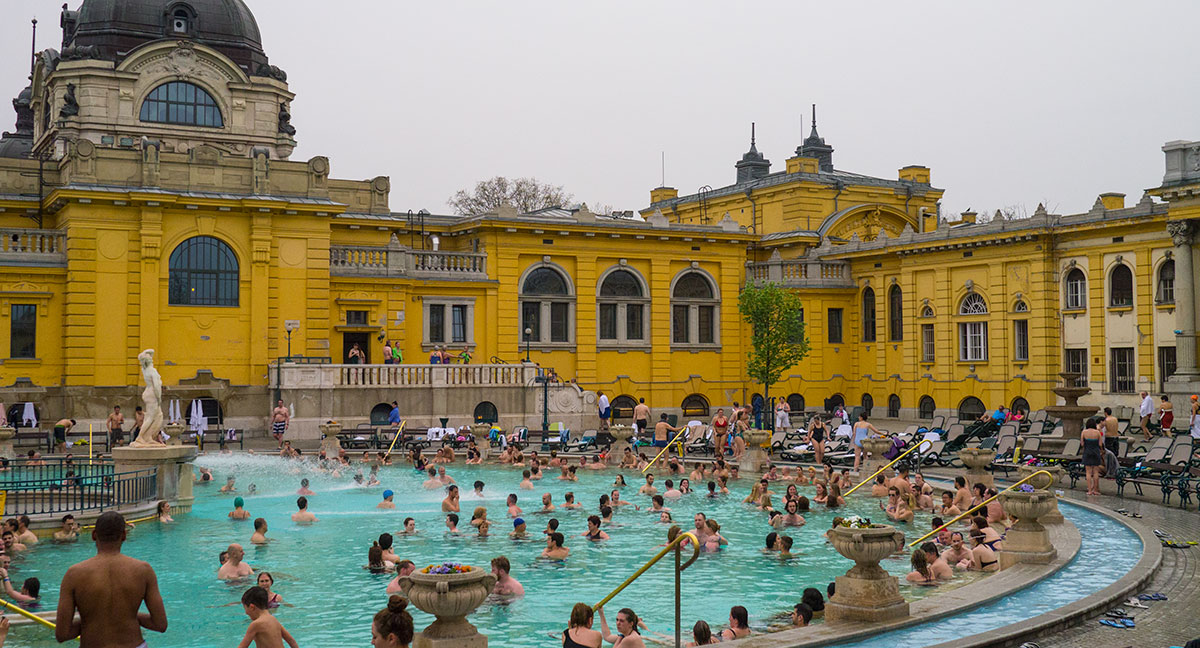
Gellért Baths, part of the famous Hotel Gellért are located just over the River on the Buda side. The almost century old Art Nouveau building is a gem of the Budapest spa scene where you can easily spend a day, explore the numerous pools, get luxury treatments without having to feel crowded by other tourists. Gellért is famous for its lovely warm spring water pools, its architecture, its landscape, and also for its spa treatments, and pampering massage therapies at reasonable prices.
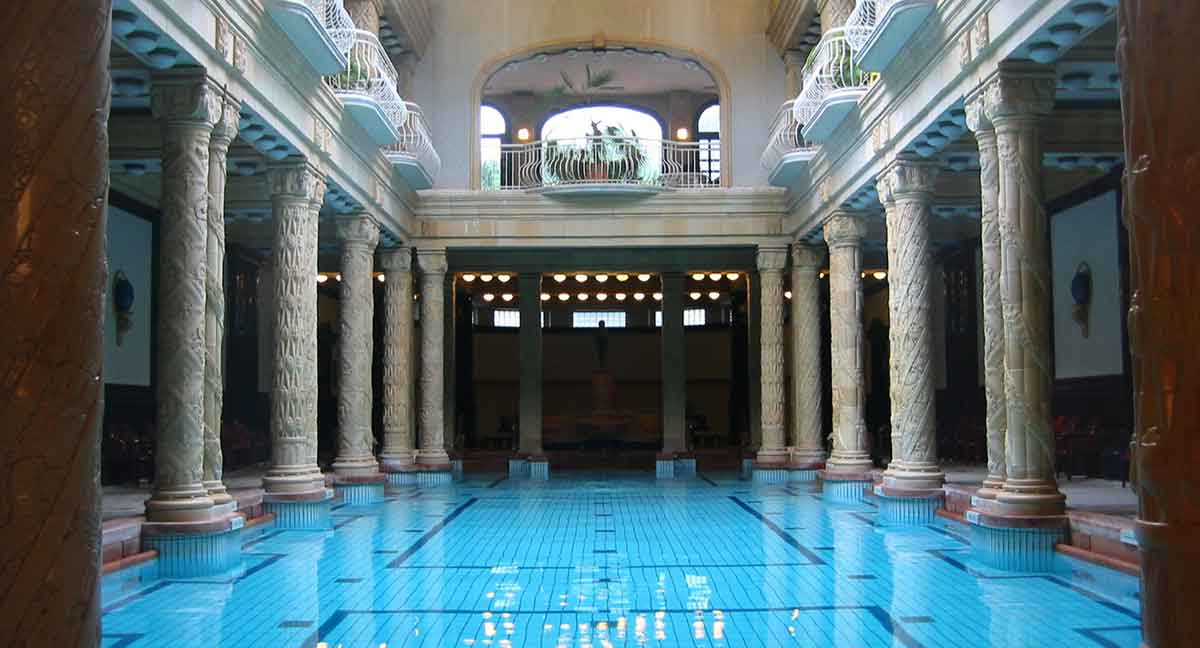
Markets & Shopping
Located at the end of the famous pedestrian shopping street Váci utca and on the Pest side of the Liberty bridge at Fővám square you will find Budapest’s’ Great Market Hall. The market offers a huge variety of stalls on three floors, ranging from fruit and veg stalls, cakes and confectionary and souvenirs. The entrance gate has a neo Gothic touch and distinctive architectural feature is the roof, which was restored with colourful porcelain tiles. The ground floor of the Great Market Hall is devoted to food. Pastries, fresh produce, meats, cheeses, wines, and other Hungarian delicacies can be purchased here. The range of products is almost overwhelming! Lots of vendors also serve up hot snacks and lunches at this indoor market. The top floor of the Great Market Hall, is devoted to traditional Hungarian crafts and souvenirs.
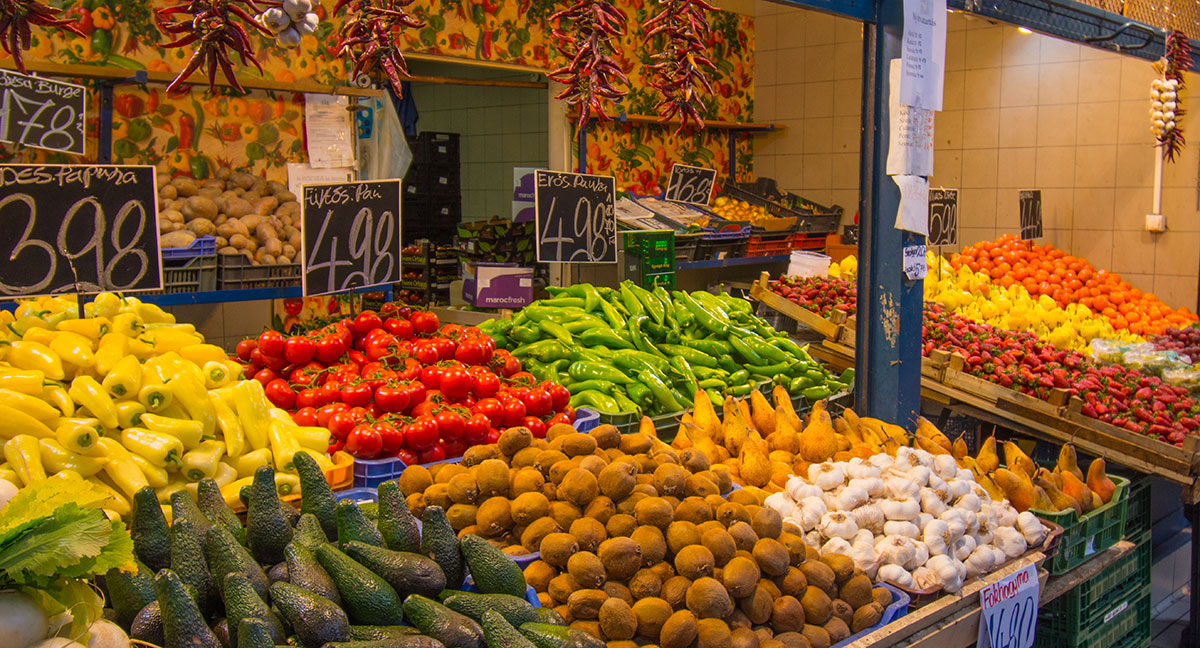
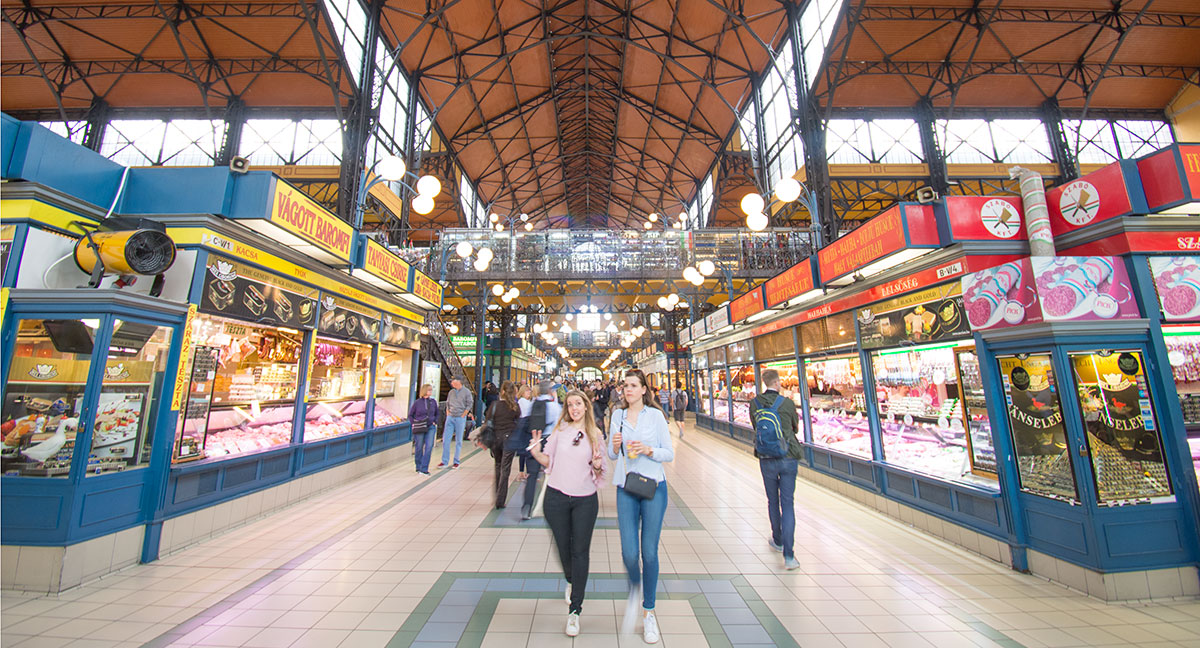
Váci utca is one of the main pedestrian thoroughfares and perhaps the most famous street of central Budapest. It features a large number of restaurants and shops catering primarily to the tourist market. The guidebooks will tell you that it is tourist central, which is fair but the line of cafés and shops are worth seeing if only once.
At the opposite end of Váci utca from Budapest Great Market Hall is Vörösmarty tér (Vörösmarty Sqaure). This popular square in the heart of Budapest was named after the renowned Hungarian poet Mihály Vörösmarty, whose statue can be seen in the middle of the square. The Budapest Christmas market is held every year in the square, along with many other markets throughout the year. We visited in mid April and the square was buzzing with street food stalls, arts and crafts stalls and pop-up bars and coffee shops.
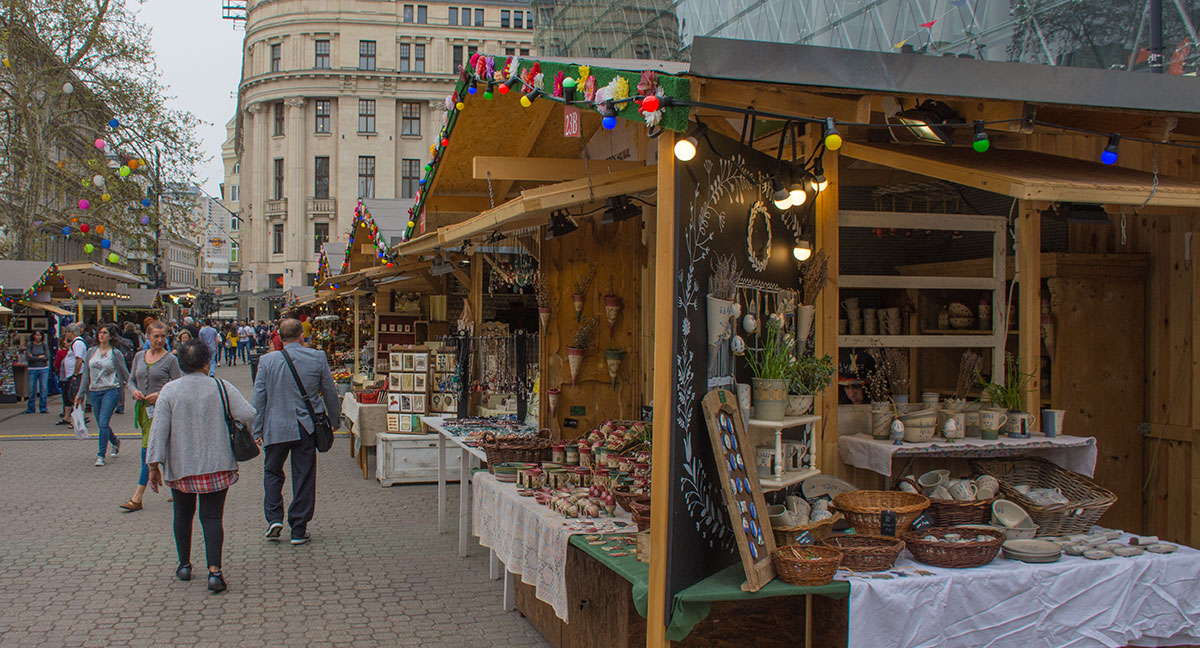
Dining options
We had some enjoyable meals during our 3 days visit to Budapest. There are many good restaurants along Október 6. Utca (October 6 street), including:
Urban Betyár – A modern restaurant offering Hungarian tradition with a contemporary flair in the kitchen. This place also has it’s own ethnographic museum and specialises in a wide variety of smoked products, grilled meats and also surprisingly has some good vegetarian options. Guests can watch everything being prepared in the open-view kitchen.
Első Pesti Rétesház Étterem / First Strudel House of Pest - If you like strudel, the traditional pastry of Austro-Hungarian cuisine that dates back to the 17th century, the First Strudel House of Pest is the place to visit. Home-style strudels are made here in the traditional way using old recipes. It’s not just strudels on offer here thoug, they also offer traditional and modern Hungarian dishes for lunch and dinner. We had a lovely seafood dinner, with good wine choices to match – and of course strudel for dessert!
Our two favourite places to eat in Budapest were:
Menza - A stylish restaurant on one of Budapest’s more lively squares takes its name from the Hungarian for a school canteen – something it is anything but. We turned up mid afternoon to find it packed with diners and thoroughly enjoyed our meal. The food on offer here is the simple but well-prepared Hungarian classics with a modern twist. We opted for the Catfish stew with sour cream and Hungarian cottage cheese gnocchi and the homemade ravioli stuffed with salmon in tomato-mascarpone sauce – both were delicious.
Zeller Bistro – A warm welcome and a glass of homemade Hungarian elderflower champagne on arrival, what more could you ask for! This family-run restaurant has become a popular choice among both locals and tourists who want to experience modern dishes that are affordable and rooted in the Hungarian traditions. The attentive staff here serve food sourced largely from the owner's family and friends in the Lake Balaton area. The Hungarian home cooking includes some first-rate dishes such as grey beef, duck leg, oxtail and lamb's knuckle. Superb deserts too. This was our favourite restaurant in Budapest - reservations are essential!
